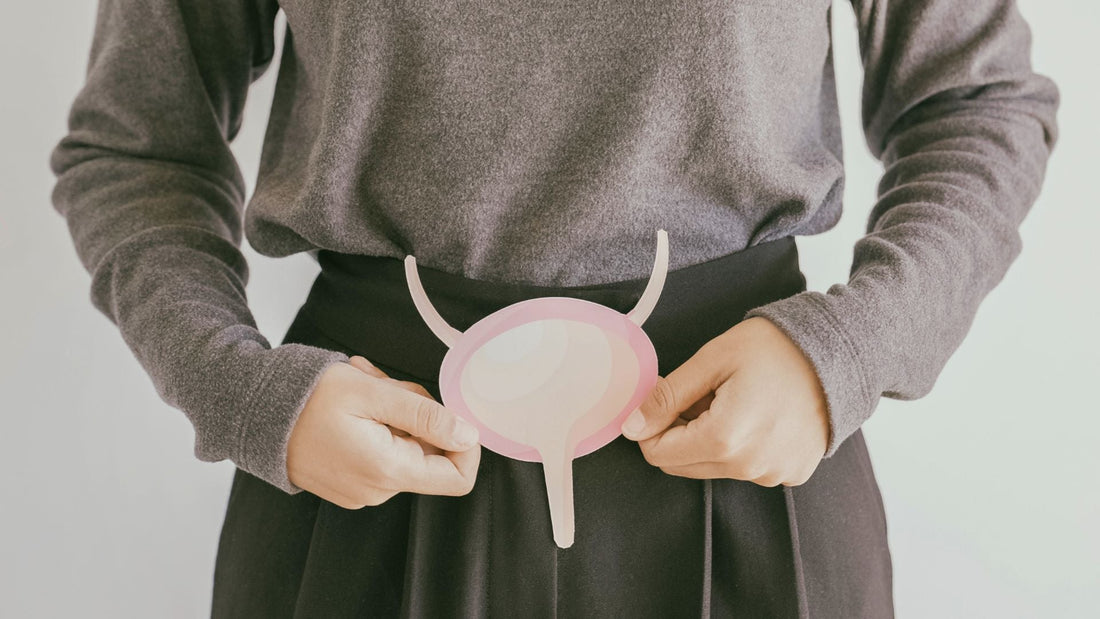
Male Incontinence Clamps Explained: How They Work and How to Choose One
Share
If you're managing urinary incontinence after prostate surgery, you've probably heard about penile clamps. These devices offer a discreet, reusable alternative to pads for many men dealing with leakage. But how do they actually work, and are they right for you?
What Is a Male Incontinence Clamp?
A male incontinence clamp is a medical device that wraps around the penis and applies gentle pressure to compress the urethra, preventing urine from leaking out. Unlike absorbent pads that catch leakage after it happens, clamps prevent the leak in the first place.
Modern clamps have evolved significantly from early designs. Today's options prioritize comfort and safety alongside effectiveness. They're designed to be worn discreetly under clothing and can be adjusted to match your specific needs throughout the day.
The typical user is someone dealing with stress incontinence, where physical activity triggers leaks. Men recovering from prostate surgery make up the largest group of clamp users, though they're also helpful for anyone with urethral weakness.
How Penile Clamps Work to Control Leakage
The clamp applies compression to the outside of the penis, which indirectly compresses the urethra running through the center. This compression is enough to prevent urine from passing through.
The key word here is "gentle." You're not trying to completely clamp off blood flow or cause pain. The pressure should be just enough to prevent leakage while maintaining healthy circulation. Modern clamps achieve this through adjustable mechanisms that let you dial in the right amount of compression.
Quality matters enormously. Well-designed clamps distribute pressure evenly rather than creating painful pressure points. They maintain blood flow to the penis while controlling urine, which is the critical balance that separates safe devices from problematic ones.
The Pacey Cuff uses a soft, adjustable design that conforms to individual anatomy. This personalized fit allows all-day wear without the complications that plagued older, rigid clamp designs.
Why proper fit matters for safety: Too loose and the clamp won't control leakage. Too tight and you risk tissue damage, pain, and circulation problems. The right fit feels secure but not painful, and you should be able to easily remove it when needed.
Different Types of Incontinence Clamps
Traditional rigid clamps use a hinged design with foam padding. They're effective but can be uncomfortable during extended wear. The fixed shape doesn't adapt well to different body types, and many men find them too conspicuous under clothing.
Here’s how the Pacey Cuff compares to traditional clamps:

As you can see, the Pacey Cuff’s flexible, adjustable design provides better comfort, discretion, and long-term safety than rigid models. Modern comfort-designed options like the Pacey Cuff use flexible materials and adjustable compression systems. These conform to your body and stay comfortable whether you're sitting, standing, or moving around. The adjustment feature lets you increase pressure during physical activity and reduce it during rest.
Reusable options make more economic and environmental sense if you'll be using a clamp regularly. While it's tempting to go for the cheapest option, remember this is a medical device you'll potentially wear for hours daily. Investing in quality pays off in comfort and safety.
Sizing and Fit: Getting It Right the First Time
Proper sizing is non-negotiable for both effectiveness and safety. Most manufacturers provide sizing guides based on circumference measurements.
To measure correctly, measure around the penis when it's in its normal, relaxed state. Use a soft measuring tape at the point where the clamp will sit, typically near the base. Don't measure when cold or after exercise, as temporary shrinkage can throw off your measurement.
If you're between sizes, most experts recommend sizing up rather than down. You can always adjust a slightly larger clamp tighter, but a too-small clamp can't be made comfortable.
Signs your clamp doesn't fit properly include pain or sharp discomfort, numbness or tingling, visible skin changes like blanching or redness that doesn't resolve quickly, or continued leakage despite proper application.
When you first try a new clamp, test it at home during low-stakes activities. Wear it for 30 minutes and check for any concerning symptoms. Gradually increase wear time as you confirm it's working safely.
Using Your Clamp Safely Throughout the Day
Start by ensuring you're clean and dry. Position the clamp at the base of the penis, ensuring it sits comfortably without pinching. Adjust the tension carefully. You want enough compression to prevent leakage but not so much that it's painful. The general rule is that you should be able to slide a finger under the clamp, even when it's secured.
Plan regular bathroom breaks every 2-3 hours, even if you don't feel an urgent need. This prevents your bladder from becoming overfilled and gives you a chance to check that everything looks normal.
Remove the clamp completely during bathroom breaks. This gives your tissues a break from compression and lets you check for any redness or irritation.
Most healthcare providers recommend removing clamps before sleep. Nighttime leakage is typically less problematic and can be managed with absorbent products. The risk of prolonged compression during hours of unconscious wear outweighs the benefits.
If you experience severe pain, inability to urinate even after removal, persistent numbness, or skin breakdown, remove the clamp immediately and contact your doctor.
Common Concerns and How to Address Them
If you're experiencing localized pain, the clamp may be positioned incorrectly or too tight. Reposition it and slightly loosen the tension. Rotating the exact position slightly can prevent irritation from repeated pressure in one spot.
Modern clamps are designed to be discreet, but clothing choices matter. Looser-fitting pants and dark colors provide more coverage. Many men wear athletic supporters over the clamp for an extra layer of smoothing.
For skin irritation prevention, keep the area clean and dry before application. Moisturize the skin after removing the clamp at night, but ensure everything is fully absorbed and dry before reapplying in the morning.
When Clamps Are Your Best Option
Clamps excel for active men who exercise regularly, work physical jobs, or simply want to move freely without worrying about pad shifting or bulkiness. Compared to absorbent products, clamps offer more security during high-movement activities.
Many men use a hybrid approach: clamps during the day when active, pads at night or on rest days. This gives you the benefits of both while minimizing the drawbacks of each. [For more comprehensive guidance on managing urinary incontinence after prostate surgery, including all your treatment options, see our complete recovery guide.
The effectiveness of clamps improves with practice. Most men need a week or two to find their ideal positioning and tension.
Frequently Asked Questions
Do incontinence clamps hurt?
Properly fitted clamps should be comfortable. You'll be aware you're wearing it, especially at first, but there shouldn't be pain. Pain or numbness means something needs changing immediately.
Can I wear a clamp during exercise?
Yes, many men specifically use clamps during physical activity when leakage is most likely. They're designed to stay secure during movement. Just ensure it's properly positioned before starting your workout.
How tight should a penile clamp be?
Tight enough to control leakage but loose enough to maintain circulation and comfort. A good test: you should be able to slide a fingertip under the clamp when it's secured.
Will a clamp damage my urethra?
When used correctly with proper fit and regular bathroom breaks, modern clamps are safe for daily use. Problems arise from clamps that are too tight, worn too long without breaks, or poorly designed products.
Can I sleep with a clamp on?
Most doctors recommend removing clamps at night. Eight hours of continuous compression isn't advisable, and nighttime leakage is usually manageable with absorbent products.
Finding the Right Solution for You
Male incontinence clamps offer a practical, dignified solution for many men dealing with post-prostatectomy incontinence. The key to success is choosing a quality product, ensuring proper fit, and using it correctly.
Quality clamps like the Pacey Cuff combine the security you need with the comfort required for all-day wear, giving you the freedom to focus on your recovery rather than constantly worrying about leaks. Here’s what customers are saying after switching to the Pacey Cuff:


